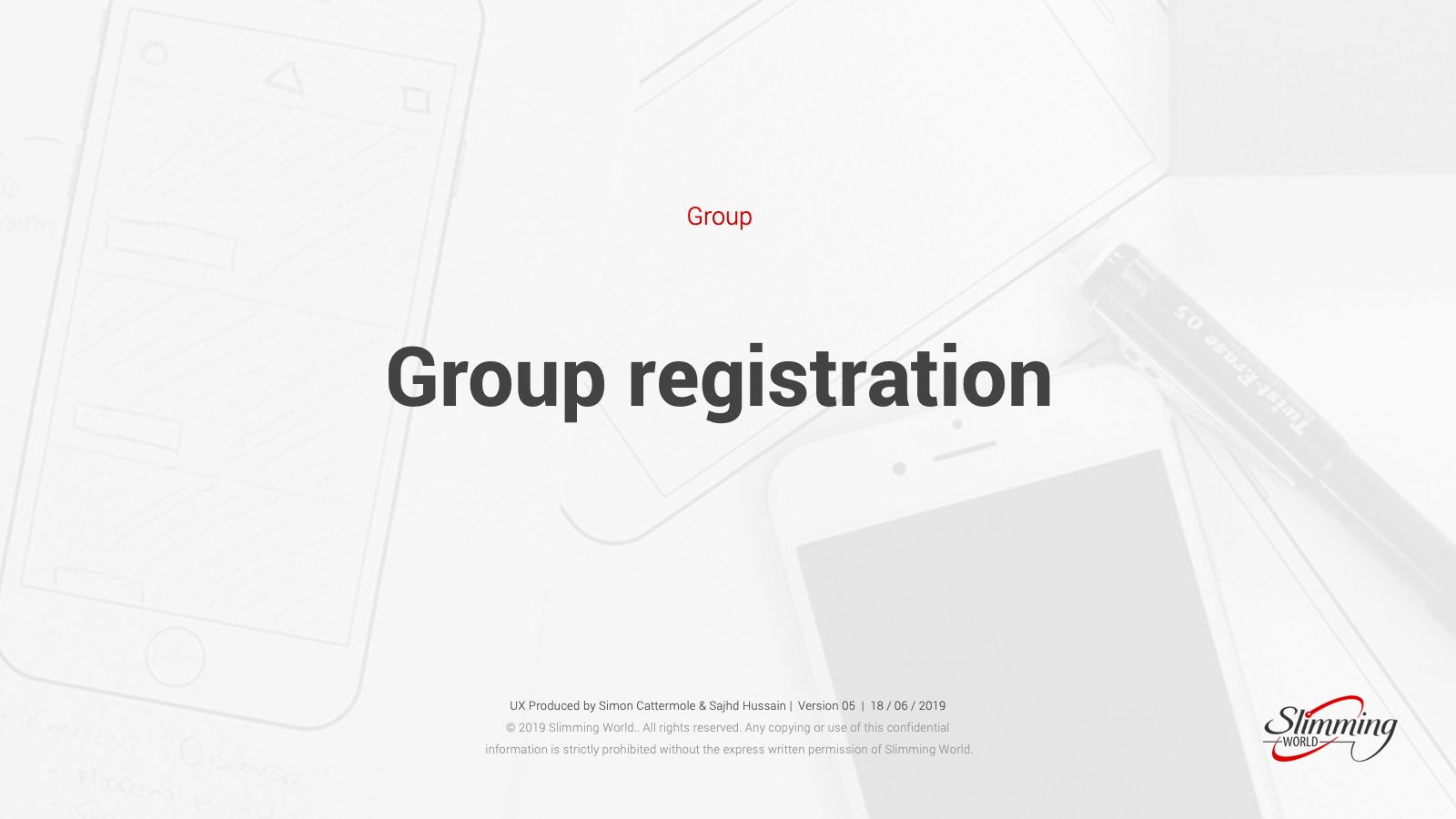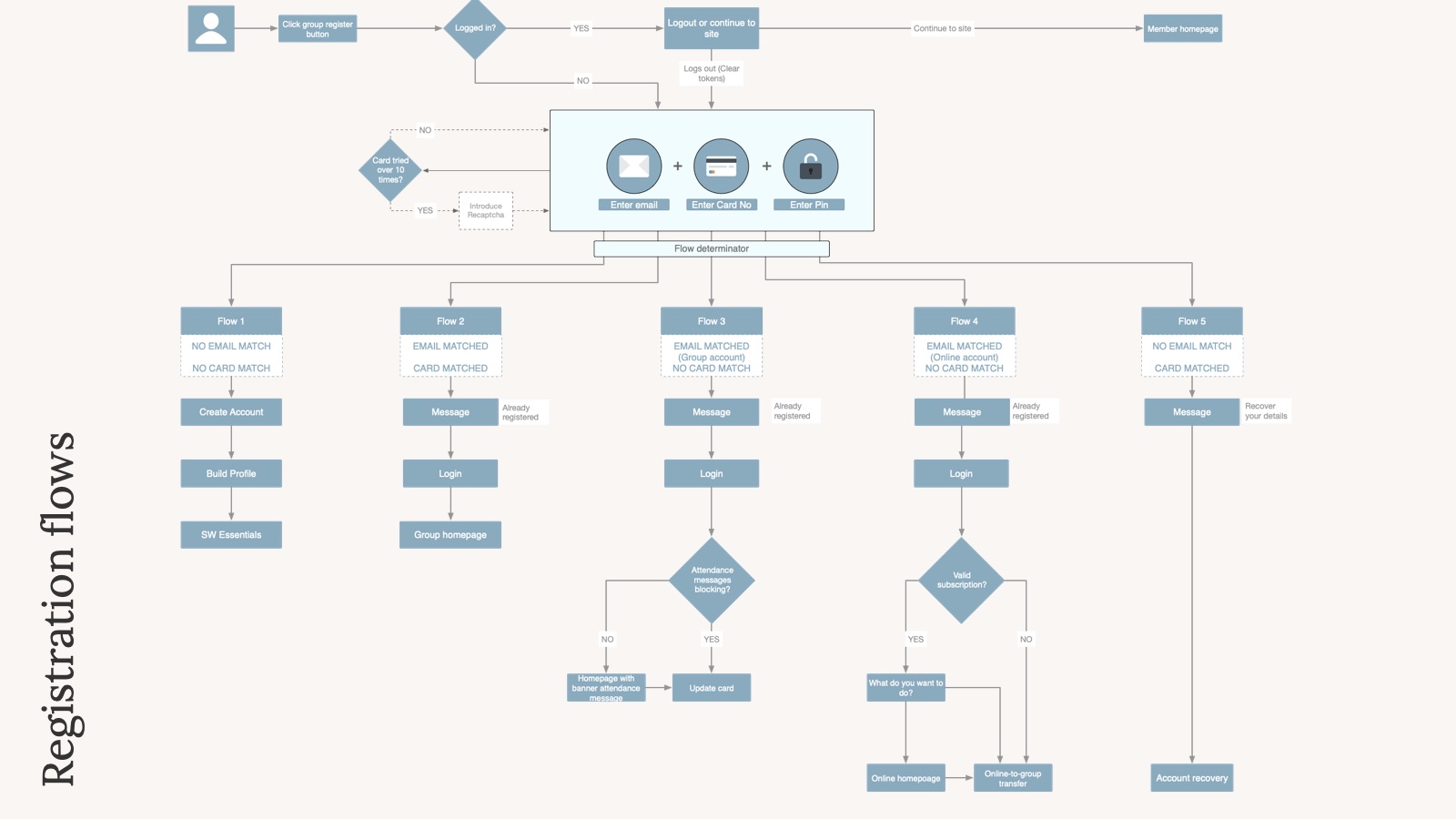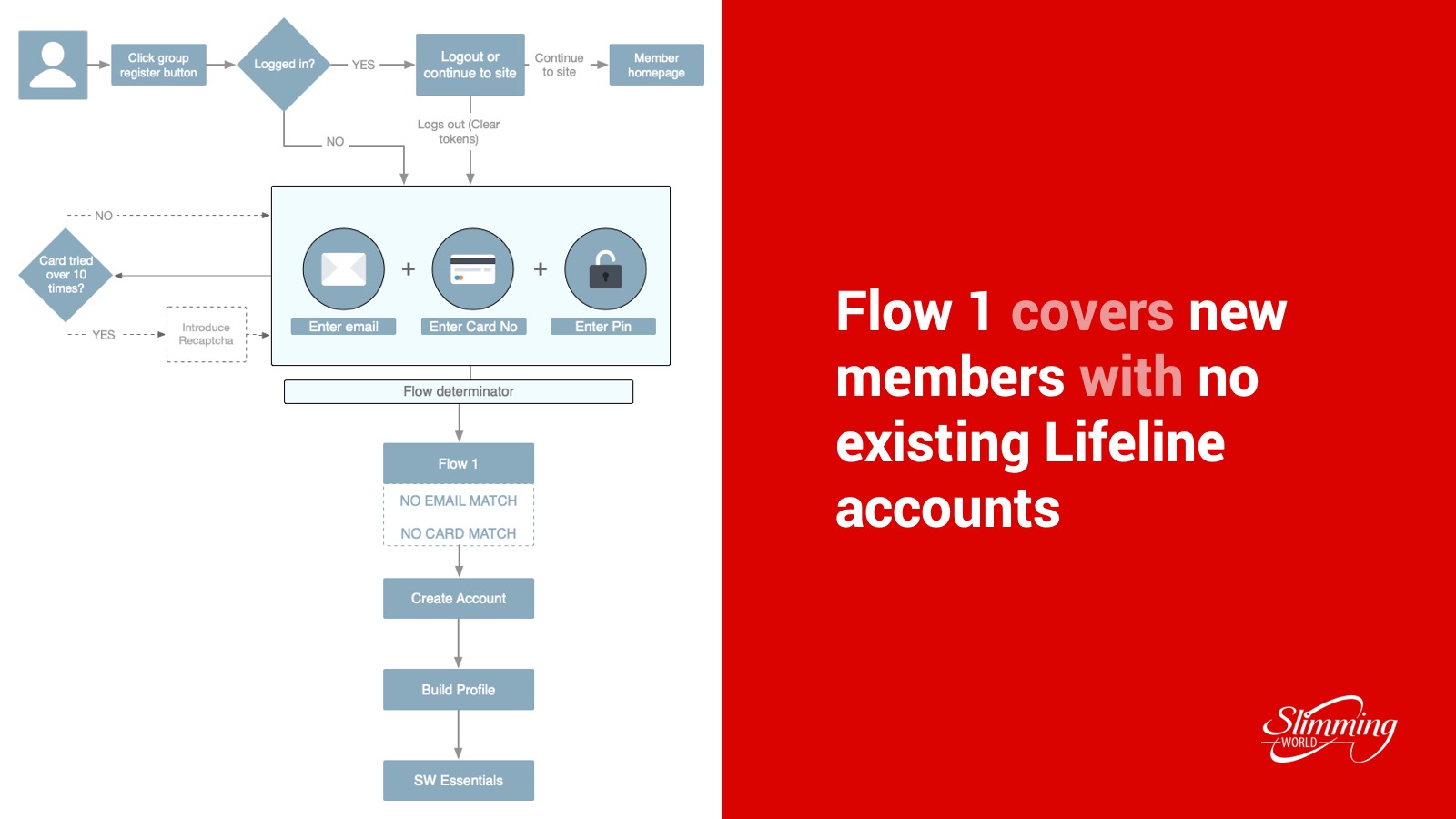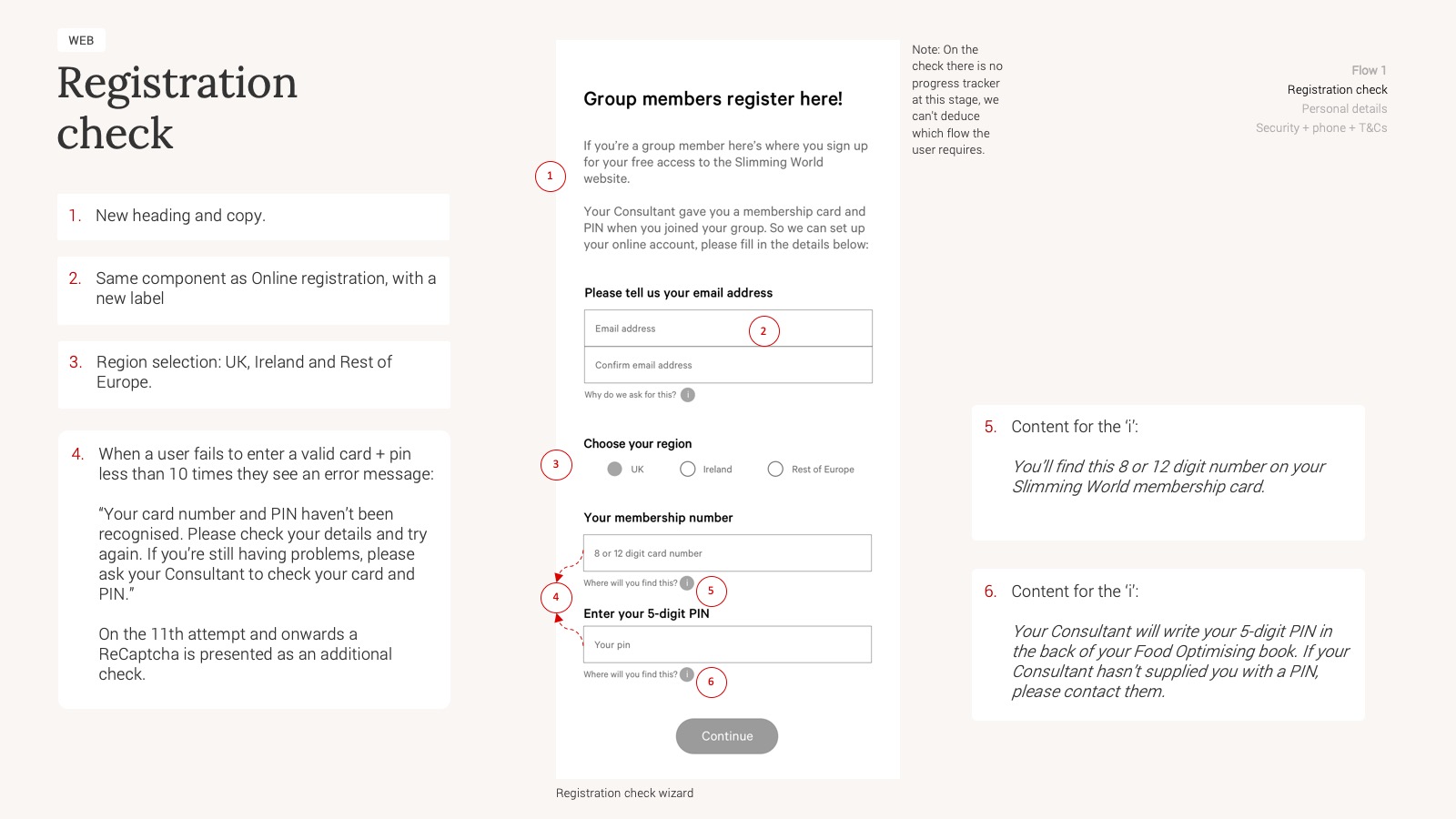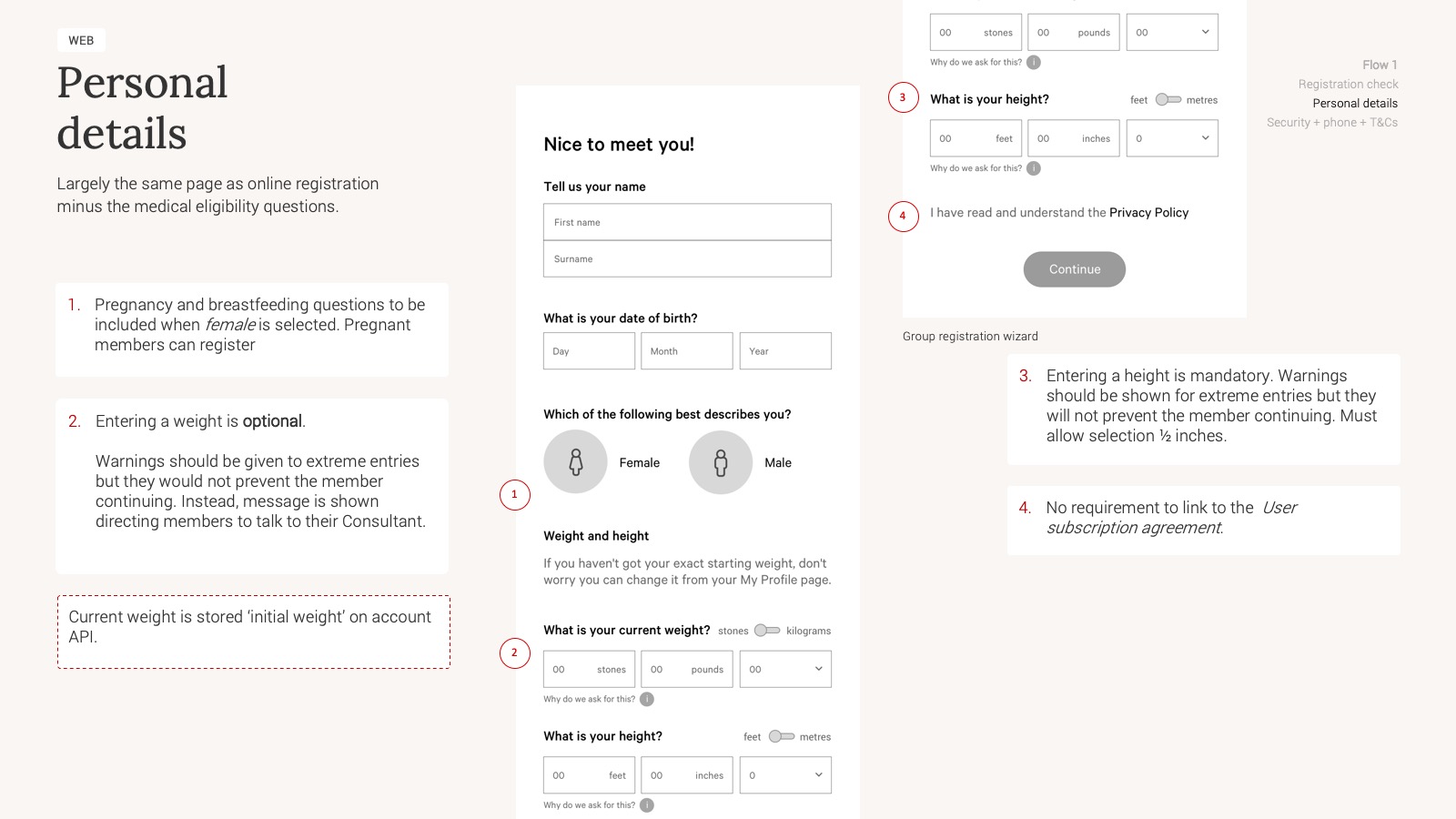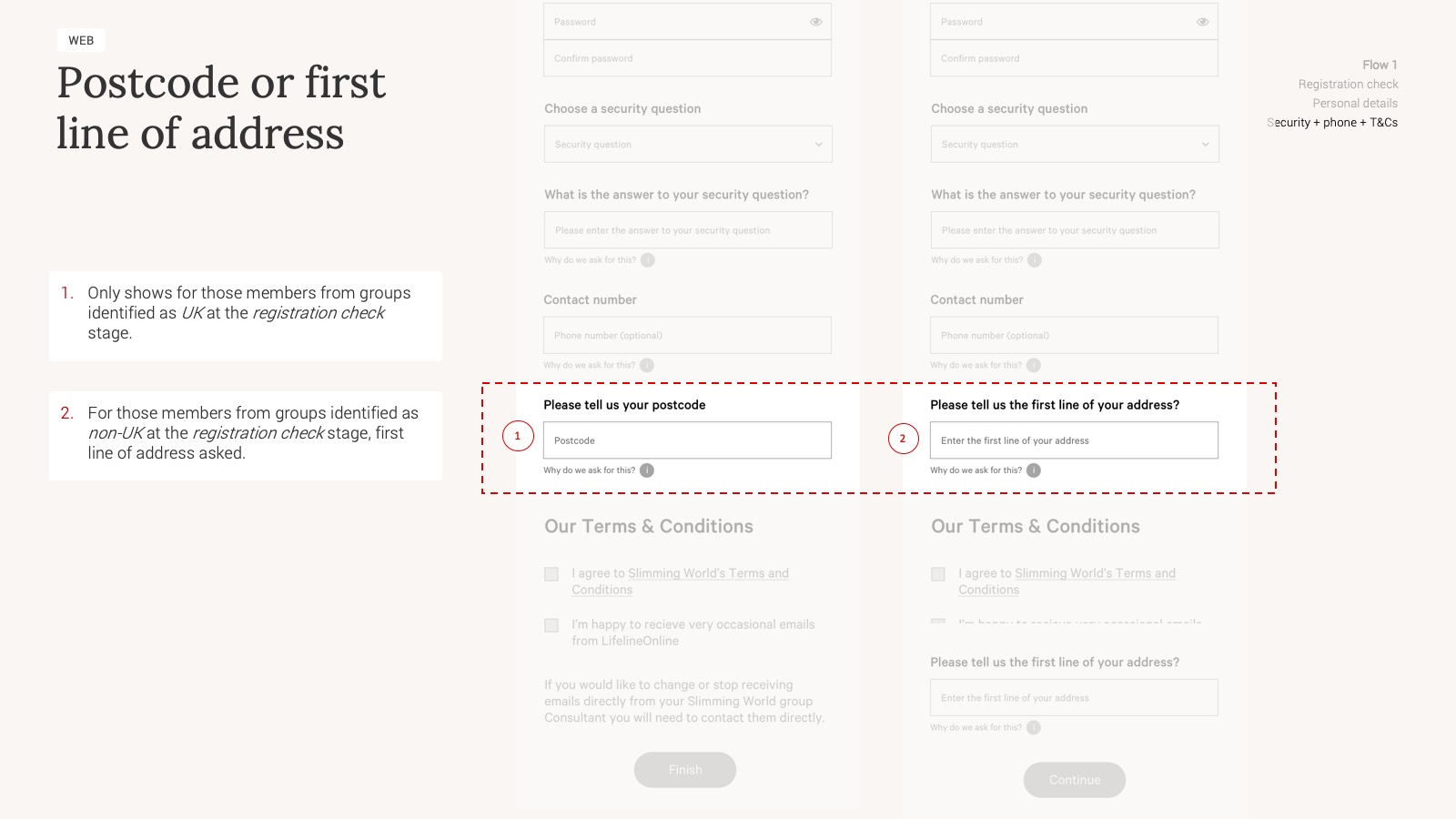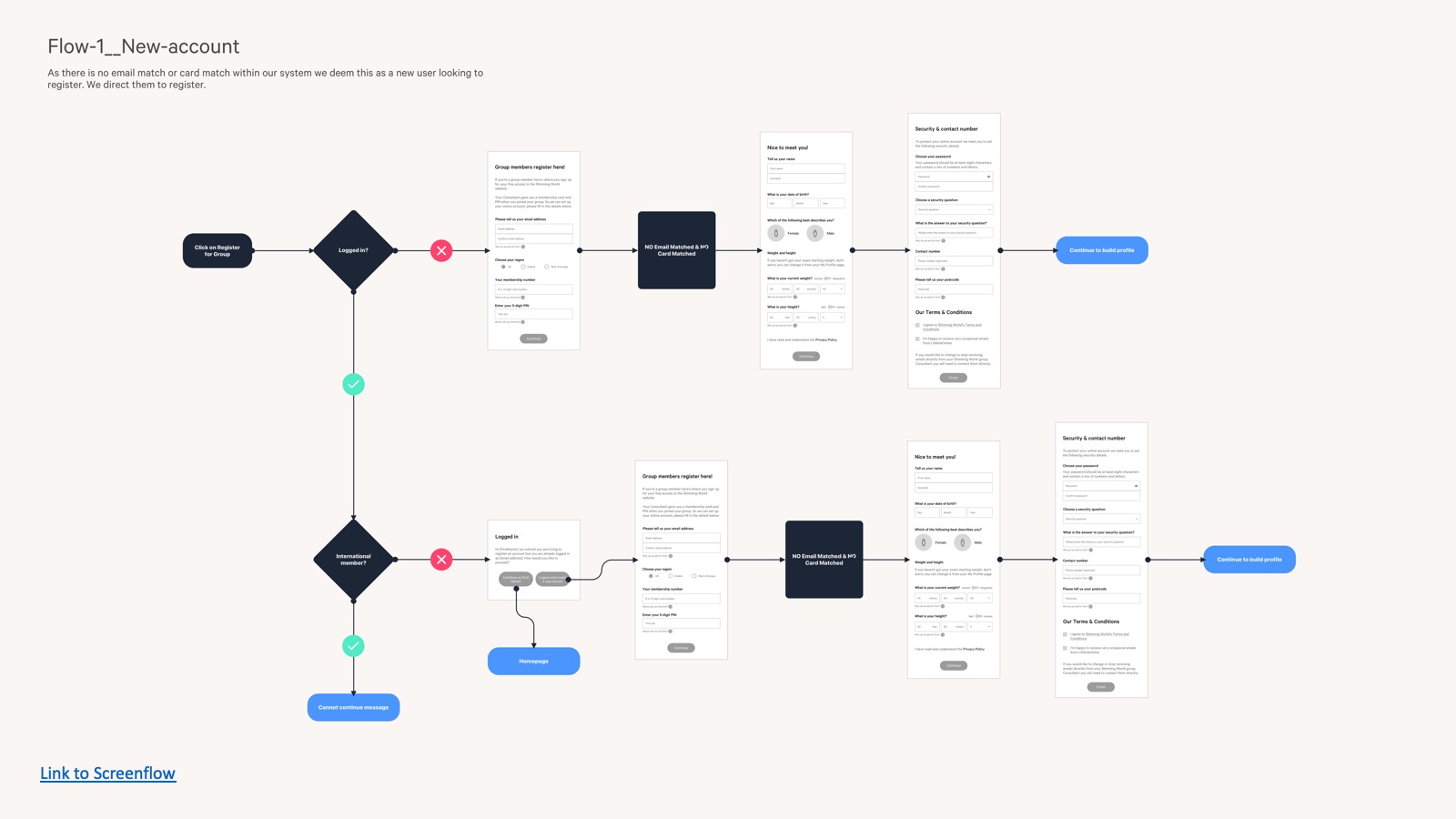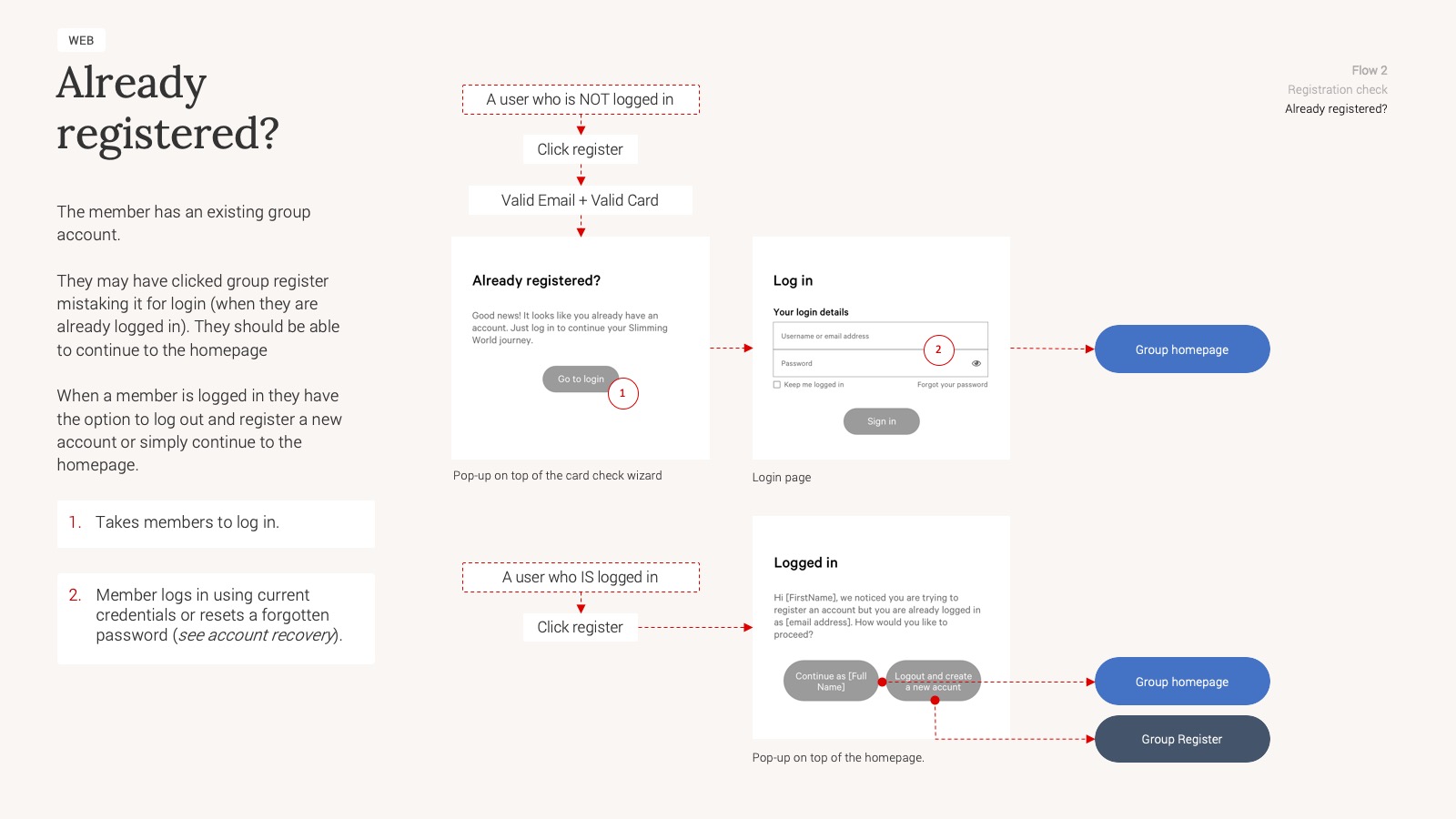The Process Slowing down to speed up
Facilitating discussions
With me recently joining Slimming World, I had to quickly understand the business, and how the platforms served members, I also needed to understand how the historical decisions around the service came about. With minimal documentation, it meant I had to speak to various domain experts within the business to understand business rules, and in general just how things ticked/worked in the digital department.
Flows
A big part of my initial work involved mapping and documenting current-as-is journeys for our Online members who were currently using the platform. This gave us a starting point to go on and understand how these flows would need adapting to handle Group members. I setup meetings with product owners and stakeholders to run through the current-as-is flows, to confirm accuracy, as well as ideas on how Group adaptations could fit in. These meetings also took place with the wider digital team to gain understanding of business and technical constraints, which in turn helped me develop the initial concepts.
Wireframes
I discussed wireframes, low fidelity mockups to stakeholders and then produced high fidelity mockups before creating prototypes for usability testing.
Business rules
As part of the UX documentation, business rules documentation was also created to support the development teams in understanding how to align the codebase accordingly.

